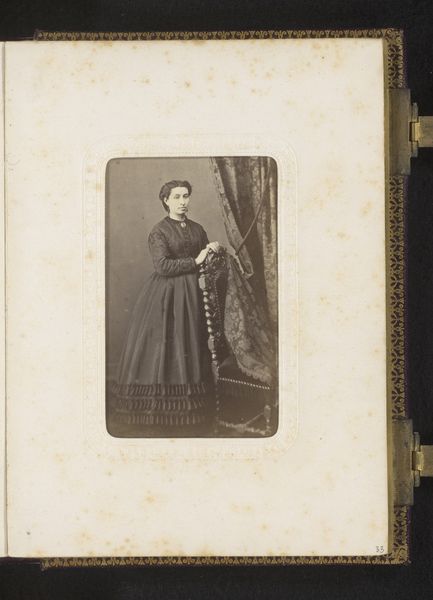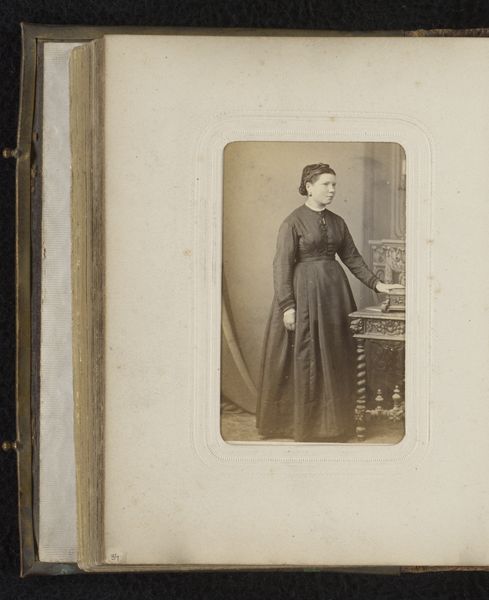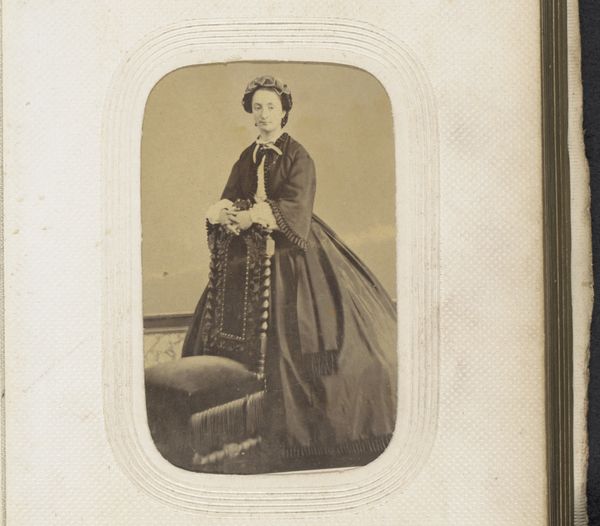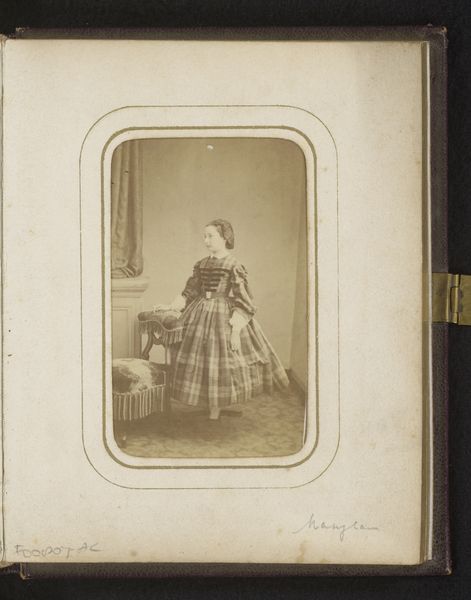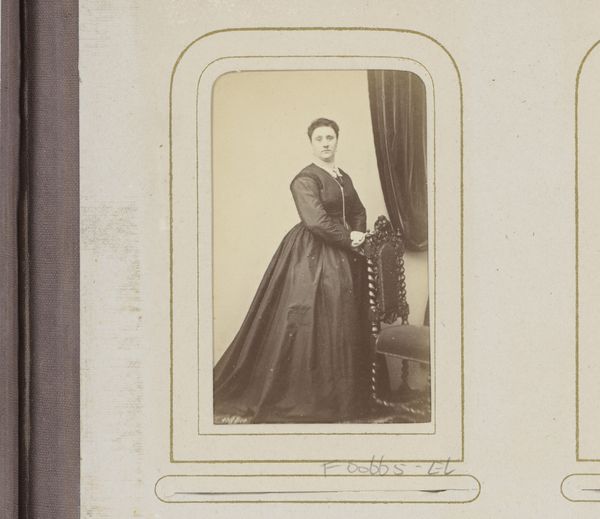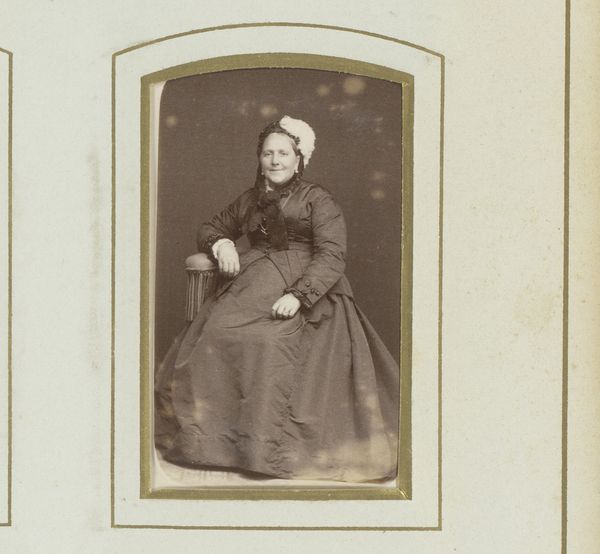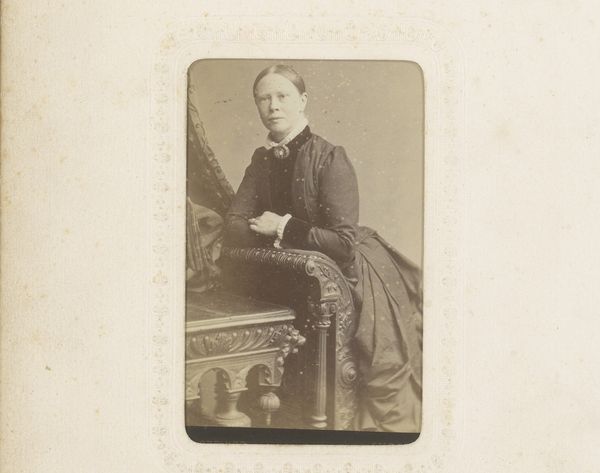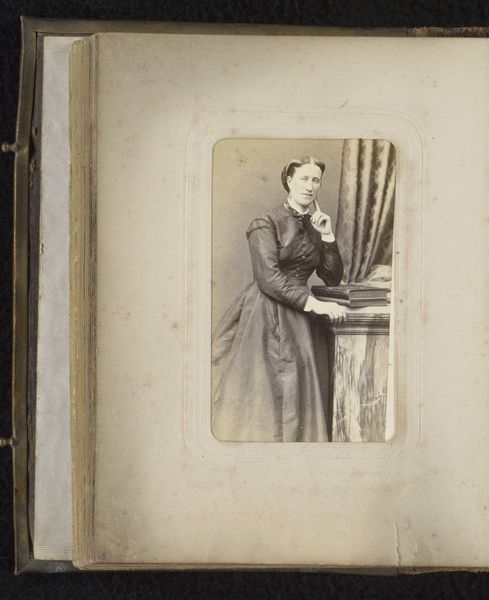
print, photography, albumen-print
#
portrait
# print
#
photography
#
genre-painting
#
albumen-print
Dimensions: height 87 mm, width 53 mm
Copyright: Rijks Museum: Open Domain
Curator: Isn't this albumen print, "Portret van een vrouw, staand bij een stoel," from between 1860 and 1900 absolutely captivating? We believe the photographer may have been J. Bourens. Editor: Haunting! She seems utterly trapped in amber, a ghost leaning on a meticulously carved chair. The sepia tones add to the feeling of a bygone era, stiff formality mixed with something unreadable in her eyes. Curator: Absolutely! Think about what it meant to have your picture taken then—a formal event, not a fleeting moment. Her dress, the chair, they are all statements of status, or perhaps aspiration. It makes me wonder what was left unsaid. Editor: I wonder about the material conditions, too. That ornate chair contrasts starkly with the plain backdrop, and hints at the burgeoning bourgeois class imitating aristocratic tastes through objects and posture. Curator: I see your point! It also brings to mind questions about the limited agency of women in those decades. A portrait became one of the only ways for many women to assert an identity, to mark a space in history... however confined it might have been within societal constraints. I’ve always felt a deep connection to this artwork as an expression of their silence. Editor: Right! How can we, looking at it now, let them reclaim a narrative? Or recognize all the nameless faces that would never find themselves portrayed? Maybe in appreciating the subtle power in the photograph itself—that flicker of individuality she manages, despite everything. Curator: Maybe that’s the real allure of portraits, isn't it? That tiny spark of life defying the imposed silence. Editor: I'm taking away a need to complicate historical representation: neither celebratory or critical. The point is in making sure we engage the present from there.
Comments
No comments
Be the first to comment and join the conversation on the ultimate creative platform.
